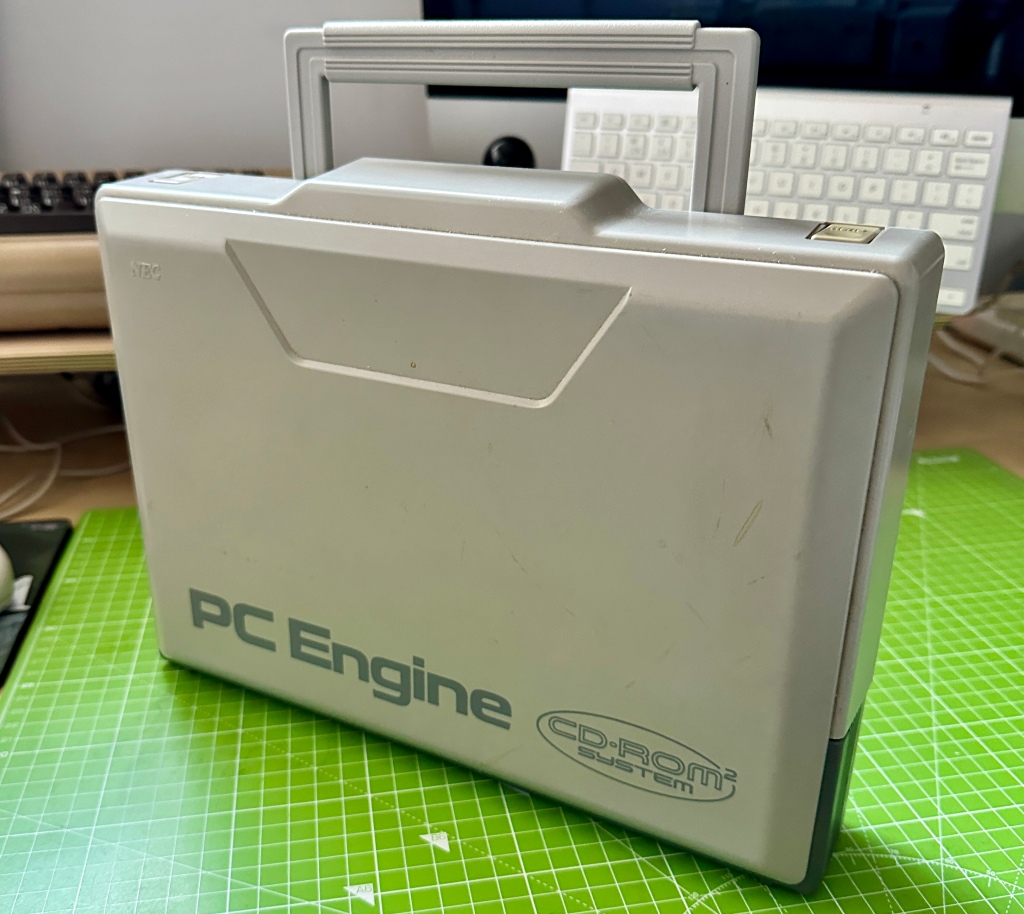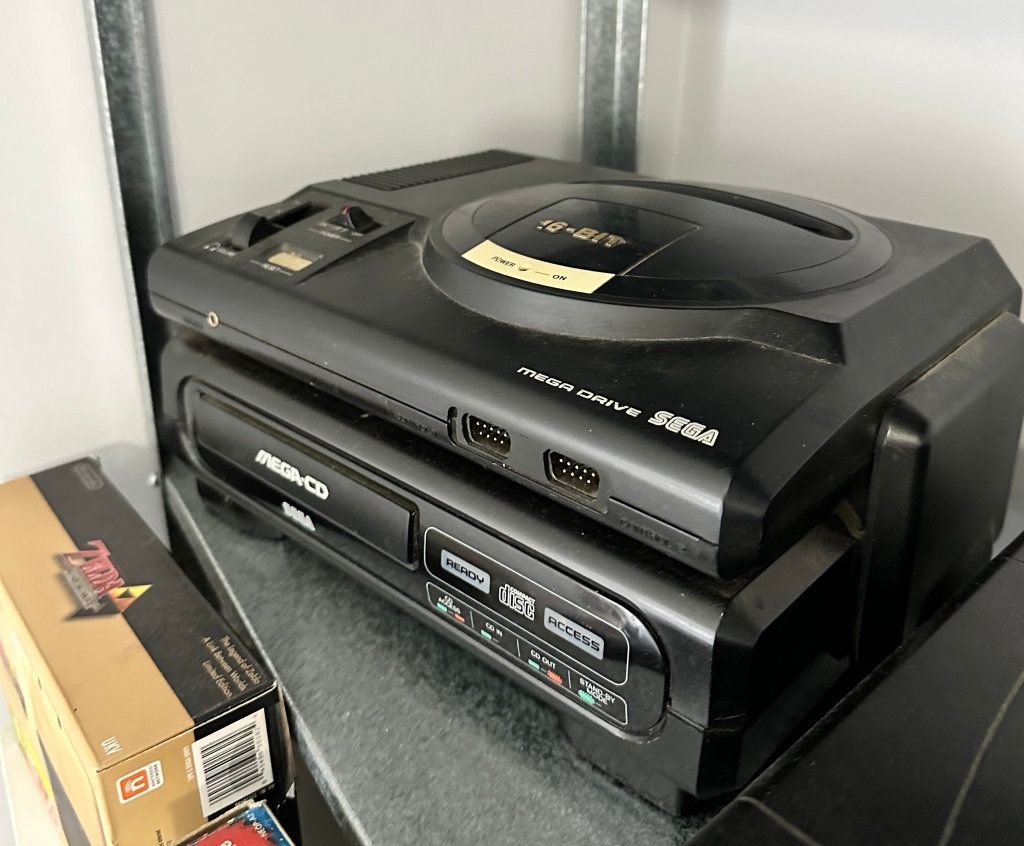Hello my friends. Last week we looked at LaserDisc, the optical 12 inch transparent disc media read by a laser for music and video playback. This week we take that to the next level with the smaller CD technology as we start to get all interactive.
Let’s explore and welcome back ☺️
It would be remiss of me not to have a quick look at the birth of the compact disc or CD technology first but we won’t go too far into this.
We will visit it again in the new year when we take a deeper dive into the timeline of the rise of digital music technologies with a separate dedicated blog entry.
The compact disc system was of course an evolution of the LaserDisc technology we looked at in last weeks blog “Welcome to DiscoVision”
Prototypes for the first CD system were independently in development by both Dutch technology company Philips and by the Japanese technology company Sony in the late 1970’s.
By 1979, Philips and Sony had come together on the project and this was an extremely smart move to stop the all too familiar problem in the audiovisual sector of competing and conflicting formats.
It was thought that having a unified design language, disc format, and the way the new CD players would look and work would be advantageous for both companies.
We had seen in the past with VHS vs Betamax in the dawning of the home video era, how rival technologies in the same sector had mudded the waters considerably.
This time the process of bringing these machines out had to be less confusing for consumers and make adopting these new system easier to bring to market.
The “Redbook” CD-DA digital audio standard was published and approved in 1980 after this joint development by the two technology companies and the first players came to market.
Sony’s CDP-101 is widely recognised as the world’s first commercially available audio CD player released in Japan October 1st 1982.

With a price tag of $730 in 1982, (which would be roughly $2,300 in today’s money), it would once again be a very considered purchase for any home consumers.
Let’s see what our friends at the U.K’s BBC’s future technology TV show “Tomorrow’s World” had to say about the new compact disc systems back in 1982 with this wonderful video clip.
To be honest, even back then there were still competing digital audio technologies trying to fight it out with the new CD systems but we will look at that with a dedicated blog entry in the New Year l mentioned earlier.
Back to CD’s and our next step, CD graphics. This wasn’t something that came after CD’s were launched but was a part of the technology right from the get go.
It would become its own standard as an extension of the “Redbook” CD-DA format known as CD+G (Compact disc graphics) in 1985 and a further evolution of that would be CD+EG, (Compact disc extended graphics) with even better audio and visuals.

These CD+G systems initially had low resolution graphics and song lyrics that could be displayed on a TV screen and it was primarily marketed at the Karaoke market.
The CD+EG system although an upgrade, was very rarely used in the commercial sector and was a format that disappeared as quickly as it arrived.
By this time in the mid to late 1980’s standard CD audio players were becoming common place in people’s hi-fi set ups as the technology had been refined.
With miniaturised, carry-able CD units even starting to eat into the market share of personal cassette players, CD’s and their players had become vastly more affordable and were here to stay and not a passing trend.
Music CD’s were being produced on mass with most albums and singles having a release on vinyl record, audiotape, and compact disc.
In 1985, the new CD-Rom technology would emerge and this would be the start of the CD format becoming the new standard in computers and some video games consoles.
CD-Rom,(Compact disc read only memory), had the ability to store between 650MB-to-700MB of digital information per disc which was superior to anything at the time.

To put that capacity into some kind of context, a CD-Rom disc could store 450 floppy disks worth of information which is the equivalent of 250,000 pages of A4 written text.
A good example of CD-Rom technology making its way to the home consumer was in video games consoles. One of the first to do this was NEC in 1988.
Their PC-Engine console used a CD-Rom unit add on system to their existing “Hu card” based machine named the “PC-Engine CD-Rom2 unit” which l happen to own.


These machines were only available in Japan at the time but they did have a North America variant called the Turbo Grafx-16 which had the CD-Rom unit as an add on.

This was essentially the same unit as the PC-Engine but it had a different design for the western market which NEC thought would be more appealing.
Of course, not only were these CD-Rom players for games but they also had multiple functionally of being music CD players as well.
This would open the flood gates for CD-Rom add-on and stand-alone gaming consoles right throughout the late 1980’s and into the 1990’s.

With most of the systems shown above, they tried to capitalise in the new concept of “full motion video” into their gaming experiences but the results were often a very choppy and pixelated solution.
Probably the most famous of these new CD-Rom systems would be the heavily advertised, Sega CD unit for the Mega Drive, (or Sega Genesis in North America), which launched in 1991, which l also happen to own.

Titles such as “Night trap” went all in on the machine’s ability to mix gameplay and live action video but it was more of a gimmick and unfortunately the enjoyment of the game became an afterthought

PC’s also saw leaps in CD-Rom technology during this time in the early 1990’s with systems like the 386 ,486, and early 586/Pentiums seeing all manner of CD-Rom drives.

When l worked for the commercial stationery company back in the early 1990’s as mentioned in my blog entry, “Focused Filming” from August of this year, it would be the first time l would get to see CD-Roms in action.
The company l worked for also supplied all types of office furniture and equipment including PC’s from the 386 to Pentium era while l worked for them.
We also used PC’s for desktop publishing using CorelDraw which was all on CD-Rom by the time it got to version 5, (we started with version 3 originally), as there was so much supplied clip-art and other assets at this point that it couldn’t be shipped on floppy disks.


Once again in future blogs next year l will do separate deeper dives into PC’s, Mac’s, Amiga’s, Commodore’s CDTV and all manner of computers that utilised CD-Rom technology.
In Today’s blog, l just want to show the transition from CD to CD-Rom and some of the different types of machines and interactive ways it was used.
What all these CD-Rom technologies had in common was the use case. Computers and game consoles were typically not part of the standard home entertainment set up but Philips wanted to change that.
The Philips CD-i,(Compact disc interactive), was launched in 1991 to be the one unit that could do it all. Audio CD’s, CD-Roms, interactive games and films all in a sleek and user friendly “under the TV” unit.

When the Philips CD-i 910 initially launched at the latter end of 1991 in North America, a unit would set you back around $1,000 which would be $2,260 in today’s money.
Unlike CD-Rom drives that came before, the Philips CD-i was a complete computer system hence the fairly expensive price tag at the time but even then it had limitations.
It could play any music CD’s but it could only play bespoke Philips interactive CD-Rom titles, educational software and games and there wasn’t many of those to begin with or even by the end of the CD-i’s lifespan.
Full motion video did come to the unit by 1994 with a “digital video card expansion” that was an optional extra and of course, added more cost to the unit and plugged into the rear of the machine.
This then allowed CD+G, Photo CD’s and VCD’s, (Video CD’s) playback via M-PEG 1 encoding software and hardware on the expansion card.
Philips did have the backing of over 850 companies globally that where interested and invested in the technology but confusingly, Philips wasn’t sure how to market the CD-i effectively.
One minute it went from being classed as a interactive media player, then to a cutting edge gaming console and everything in between and consumers got lost in a confusing and conflicting advertising campaign.
With the advent of better CD based gaming consoles from both Sony with it’s PlayStation and Sega with it’s Saturn and higher specification PC’s at lower prices that had defined marketable roles as we got to the tail end of the 1990’s, Philips had all but abandoned the CD-i concept by 1996.
As with LaserDisc’s that we looked at last week, the Philips CD-i had the right idea with VCD’s but it was just at the wrong time and on one was willing to back the format.
Technology needed to take another leap forward with better video and audio compression, new higher quality disc media and cutting edge lasers and players.
We were on the brink of the new age of DVD that would bring to an end all other formats for home video playback and most critically in recording as well.
And that’s where we are heading to next time.
As always, thank you so much for reading today’s entry, your likes, comments, shares and general interest in the blog.
Let’s explore together again next week ☺️
Leave a comment